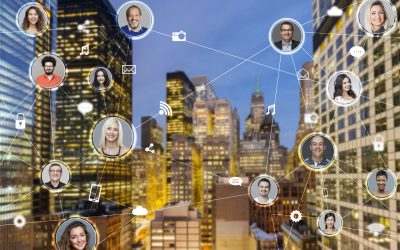Berliners have been enjoying the benefits of an additional public holiday today for five years now. But why do we celebrate International Women's Day on March 8 and why is it one of Berlin's chosen public holidays? International Women's Day was first introduced in the...
We Celebrate the Year 2024 and the 40th Anniversary of microTOOL!
microTOOL is celebrating its 40th anniversary! Let’s have a look at our history and get excited about the new features and developments that we have in stock.
Winter in Berlin: Magical Christmas Season Moments
This year we explore Berlin together during Advent in our blog post and we wish you and your loved ones a wonderful Christmas season!
Improved time recording in objectiF RPM
We present our extended, tool-integrated time recording in objectiF RPM. Legally compliant and applicable for all working time models.
Visualizing the Future of Requirements Engineering
Modern RE has to be adaptable in order to be successful in a fast-moving project environment with frequently upcoming change requests. We take a look at the current trends in requirements engineering.
Agile Quality Management – Is There Such a Thing?
Agile quality management ensures customer satisfaction. But how do you implement agile principles in quality management? Ursula Meseberg shows how to use objectiF RPM for FMEA.
Plan and Balance Project Costs
Cost planning in classic projects. To calculate project costs, you need a work breakdown structure with project phases, work packages and activities.
Project Management Software: A Comparison
It is difficult to compare project management software because there is a wide range to choose from. How can you still find the right solution?
Quality Has a Price. It Also Has a Model: Twin Peaks
Which component contains a product defect? The Twin Peaks model ensures traceability of requirements and architecture. Read how you can use the model with objectiF RM in today’s blog.
Getting to the Point Quicker – With the objectiF RPM Voice Assistant
Learn about use cases for the application of artificial intelligence in microTOOL’s solutions. Today: the digital voice assistant in objectiF RPM.
microTOOL and Artificial Intelligence (AI) – Objectives and Overview
How can Artificial Intelligence (AI) enrich requirements engineering solutions and how does microTOOL implement these functions technically? Read part 1 of our new blog series.
Remote Management – How Can it Work?
Remote collaboration is the new normal today. How can you manage teams remotely? This blog post offers practical advice.
Introducing Software? It’s Best Done Lean
Agile methods and lean management are not only suitable for product development. Have you ever introduced software iteratively?
Test Documentation with ISO/IEC/IEEE 29119-3:2021
ISO/IEC/IEEE 29119-3:2021 Software Testing was published in October. The microTOOL blog assesses the standard for test documentation.
Effective teams with a unified vision
Effective teams are an important factor in developing products. A unified vision is absolutely necessary for team work to succeed. How do you develop it?
Prioritizing Requirements – Techniques for Stakeholder Workshops
How do you prioritize requirements with stakeholders? Best in joint workshops. Get to know the Rock, Pebble & Sand method with objectiF RPM today.
IREB: 6 Steps To Good Requirements
Requirements Engineering is a key discipline in systems development. Find out the 6 key steps to developing good requirements in your projects.
Three Ways Personas Help To Improve Your Projects
What do you do if you develop products and your customers don’t want to be involved in your team? You can use personas. Personas will help you in 3 ways.
Kanban – Metrics Are Used Here As Well
Kanban is a culture of continuous improvement. But how do I recognize that the process is not running optimally?
Agile: fast, flexible and …. stressed out?
Agility and resilience = agilience, a mindset comprising multi-layered abilities to deal with crisis and change for people, teams and companies.




















